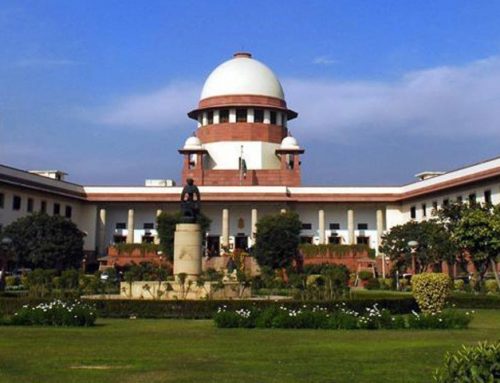On 28th November 2005 Lok Sabha passed the Disaster Management Act and it was passed by Rajya Sabha on 12th December 2005. On December 23rd 2005, it received assent of The President of India and It has 11 chapters and 79 sections and it extends to the whole of India. This Act provides for “the effective management of disasters and for matters connected there with or incidental thereto.”
What is Disaster?
According to Disaster Management Act, 2005 “disaster” means a catastrophe, mishap, calamity or grave occurrence in any area, arising from natural or man-made causes, or by accident or negligence which results in substantial loss of life or human suffering or damage to, and destruction of, property, or damage to, or degradation of, environment, and is of such a nature or magnitude as to be beyond the coping capacity of the community of the affected area.
It can also be defined as A sudden, calamitous event that disrupts the functioning of community or society seriously and causes human life, material and economic and environmental losses that exceed the community’s or society’s ability to cope using its own resources. Often such disasters caused by nature and it can have human origins.
What is disaster management?
Disaster management Act, 2005 says “disaster management” means a continuous and integrated process of planning, organizing, coordinating and implementing measures which are necessary or expedient for— (i) prevention of danger or threat of any disaster; (ii) mitigation or reduction of risk of any disaster or its severity or consequences; (iii) capacity-building; (iv) preparedness to deal with any disaster; (v) prompt response to any threatening disaster situation or disaster; (vi) assessing the severity or magnitude of effects of any disaster.
In other words conservation of lives and materials or property during natural and man-made disaster is referred as Disaster management in India. Plans of disaster management are multi layered and it covers issues of floods, hurricanes, fires, mass failure of utilities, rapid spread of disease and droughts. Our country is especially vulnerable to natural disasters because of its diverse geo-climatic condition, having recurrent floods, droughts, cyclones, earthquakes, and landslides. India is a very large country and different regions are vulnerable to different natural disasters.
Disaster Management Cycle
Disaster management follows a logical, integrated and progressive sequence of activities- a cycle of preparedness and action. This disaster management cycle has four stages, risk reduction, readiness, response and recovery.
- Risk Reduction –
Risk reduction is the culmination of a three-part process that includes risk identification and assessment. The process is dynamic; the risks are monitored, updated and analyzed. The likely hazards, vulnerability to those hazards and probable severity of the effects of any incident should it occurs, are first identified. Thereafter, the immediate and cumulative risks, particularly to people, are assessed against predetermined criteria. Safety priorities can then be defined and measures taken to eliminate, reduce or control the severity of those risks. Such measures are reinforced by legislation, code of practice and stringent operating procedures. Further safeguards are needed for residual risks.
- Readiness-
Readiness is the in-house insurance policy of disaster management and covers all preparedness and measures, notably emergency planning. It must include operational, logistical and human needs like warning system, communications, control structures, resources, causality procedures, media policy and welfare. A well conceived security plans based on sound intelligence, business acumen and common sense provides protection and ensures appropriate response to all insecurity problems.
- Response-
The core of the initial response to a disaster is provided by the emergency services and thereafter, depending on its nature and scale by the local authorities and voluntary and utility services. The common purpose is to save life and relieve suffering, and to save life and relieve suffering. The common elements of response are : Identify the disaster and raise alarm, Notify the emergency services, Save life and treat causalities, Activate the emergency plans, Confirm communications are working, Establish control, Manage the developing situation.
- Recovery-
The last stage of the disaster management is recovery. It embraces the many activities needed for a rapid return to normality, both for those affected by the incident and those providing the recovery services. Many of these activities are determined during the readiness and their implementation begun at the response stage. Among the priorities to hasten business recovery are the restoration of essential services, temporary or alternative premises, reconstruction of buildings, site re-occupation and insurance and financial reparations. Additionally, there may be investigations and inquires, and rehabilitation and aftercare to consider.
So basically there is requirement of five stage process of disaster management Which are:-
- Planning
- Prevention
- Preparedness
- Response
- Recovery








Leave A Comment